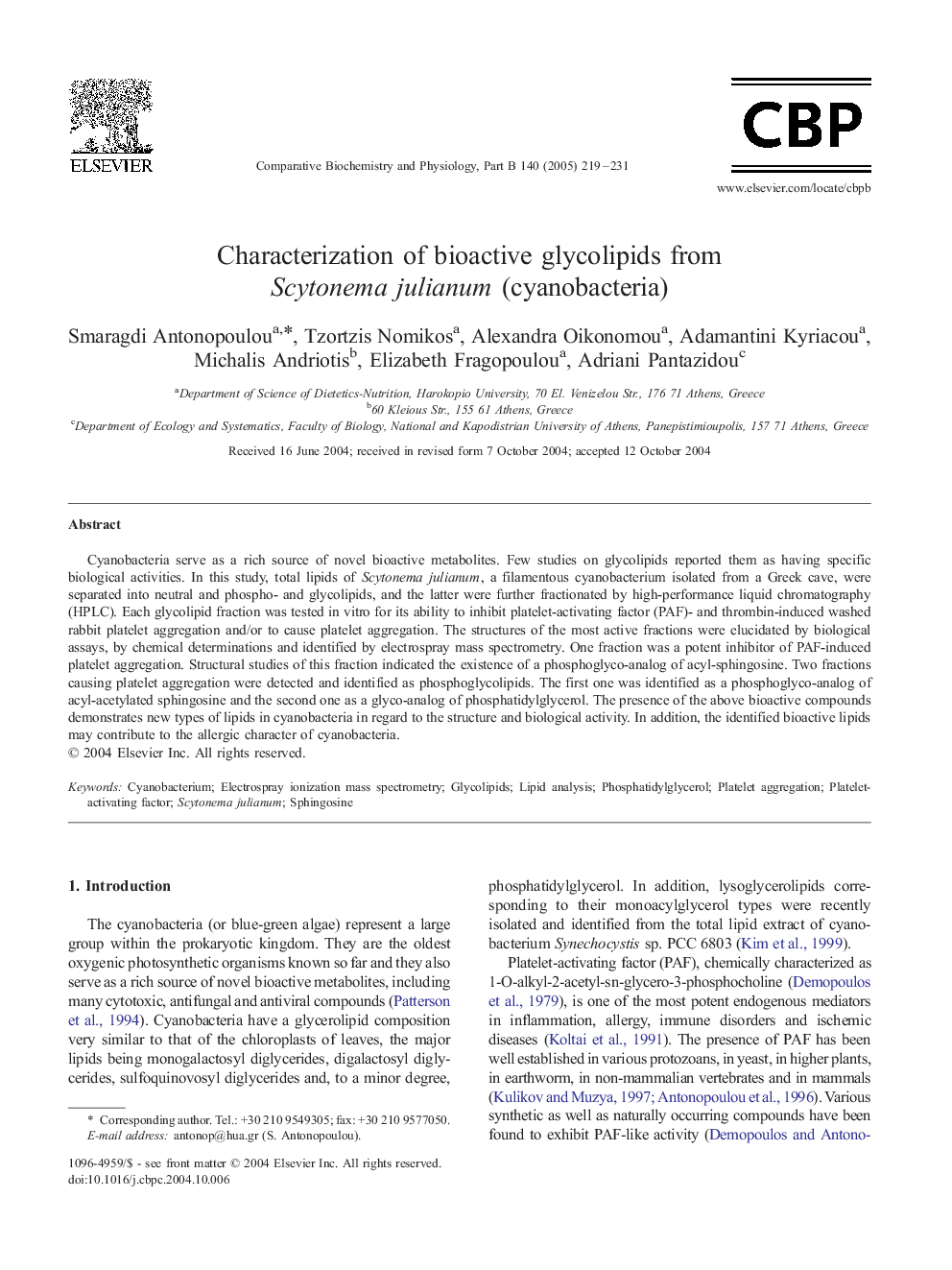| Article ID | Journal | Published Year | Pages | File Type |
|---|---|---|---|---|
| 10820693 | Comparative Biochemistry and Physiology Part B: Biochemistry and Molecular Biology | 2005 | 13 Pages |
Abstract
Cyanobacteria serve as a rich source of novel bioactive metabolites. Few studies on glycolipids reported them as having specific biological activities. In this study, total lipids of Scytonema julianum, a filamentous cyanobacterium isolated from a Greek cave, were separated into neutral and phospho- and glycolipids, and the latter were further fractionated by high-performance liquid chromatography (HPLC). Each glycolipid fraction was tested in vitro for its ability to inhibit platelet-activating factor (PAF)- and thrombin-induced washed rabbit platelet aggregation and/or to cause platelet aggregation. The structures of the most active fractions were elucidated by biological assays, by chemical determinations and identified by electrospray mass spectrometry. One fraction was a potent inhibitor of PAF-induced platelet aggregation. Structural studies of this fraction indicated the existence of a phosphoglyco-analog of acyl-sphingosine. Two fractions causing platelet aggregation were detected and identified as phosphoglycolipids. The first one was identified as a phosphoglyco-analog of acyl-acetylated sphingosine and the second one as a glyco-analog of phosphatidylglycerol. The presence of the above bioactive compounds demonstrates new types of lipids in cyanobacteria in regard to the structure and biological activity. In addition, the identified bioactive lipids may contribute to the allergic character of cyanobacteria.
Keywords
Related Topics
Life Sciences
Biochemistry, Genetics and Molecular Biology
Biochemistry
Authors
Smaragdi Antonopoulou, Tzortzis Nomikos, Alexandra Oikonomou, Adamantini Kyriacou, Michalis Andriotis, Elizabeth Fragopoulou, Adriani Pantazidou,
